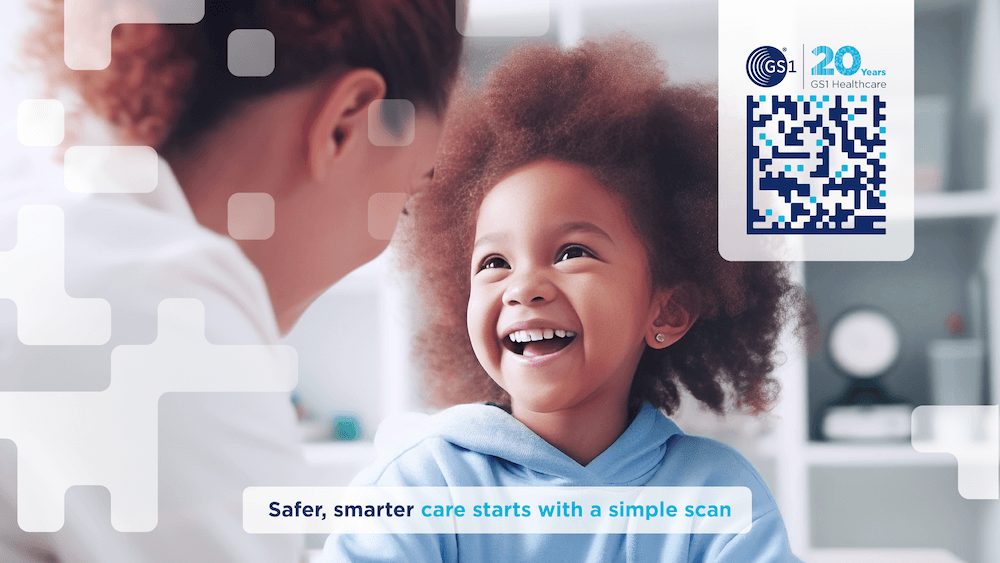Turning 20: Why standards matter more than ever in healthcare
A coming-of-age moment for GS1 and the future of patient safety
When you're in your 20s, you're no longer new to life, but you're not done growing either! Your 20s are a decade of transformation, responsibility, and stepping into who you’re meant to be. For GS1 Healthcare, turning 20 is just that - a coming-of-age moment for global standards in one of the world’s most critical sectors.
GS1 standards in healthcare all began in May 2005, when health sector leaders gathered in Princeton, New Jersey to solve a persistent challenge: how to improve safety, visibility, and trust in healthcare systems. That meeting in Princeton led to the creation of the GS1 Healthcare User Group, and with it, a bold vision to bring globally trusted standards into a space that touches every life – healthcare.
Two decades later, work done by healthcare professionals for healthcare has led to the adoption of GS1 standards in over 70 countries.
They enable life-saving traceability, support real-time decision-making, and power global supply chains for medicines and medical devices. But this 20th anniversary of GS1 standards in healthcare is more than a milestone - it marks a shift from early adoption to becoming critical infrastructure. It signals entry into a new era where standards are not simply behind the scenes but at the core of innovation, digital health, and patient safety.
Across the world, the impact of standards making a difference to patients, clinicians (and saving money) is tangible. In the UK, a programme called Scan4Safety was launched, tasked with implementing GS1 standards for the unique identification of every person, every product and every place within hospitals. The initiative has led to a 76% drop in medical errors. In the EU and US, 16.5 billion medicine packs are now traceable. The fight against counterfeit drugs, the complexity of recalls, and the need for accurate data in healthcare are all made easier with standards.
In Aotearoa New Zealand, the same challenges for product identification exist. Like most healthcare systems, our system is under pressure. In times like these, it's important to hold onto the fundamentals. In New Zealand this means a solid foundation for product data and attributes across the supply chain. Standards support the frontline and the many people in our healthcare system such as providers, clinicians and of course patients who rely on accurate, up to date product information.
Today, standards evolution continues through 2D barcodes. In healthcare, the GS1 DataMatrix is already widely adopted, capable of carrying critical data like Global Trade Item Numbers (GTINs, aka ‘barcode numbers’), expiry dates, and serial numbers. Now, using the GS1 QR with Digital Link standard, users can connect to real-time information for clinicians and patients.
“2D barcodes can help unlock a new layer of transparency,” says Jenny Langton, Head of Healthcare at GS1 New Zealand. “A single scan can now provide everything from dosage instructions to sourcing and safety data. That’s a game-changer for healthcare.”
“Global standards are fundamental to modern healthcare,” adds Dr Peter Stevens, Chief Executive of GS1 New Zealand. “They provide the confidence and accuracy needed in high-risk environments. When systems are under stress, standards deliver reliably.”
So many professionals have been involved in the 20-year journey - manufacturers, regulators, clinicians, pharmacists, and supply chain experts. As GS1 Healthcare steps into its third decade, the mission to give every patient, provider, and policymaker access to trustworthy, transparent product information, anywhere and anytime is more important than ever.
The 20th anniversary of GS1 Healthcare culminates in November with the 40th Global GS1 Healthcare conference in Brussels. This conference is a fantastic opportunity to connect, learn and help shape the future of safer, more efficient healthcare systems worldwide.



